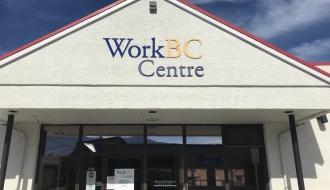Definitions
EarningsIncome that workers receive in exchange for their labour. Depending on the type of employment, earnings can be in the form of wages, salaries or self-employed earnings. |
Economic growthThe percentage change in the size of the economy, typically measured by Gross Domestic Product (GDP), over time (usually from year to year). Economic growth can be the result of increased use of labour and capital or improved productivity. Economic growth may stall in the short or longer term (see Recession). |
Economic indicatorA statistical measure used to track and help forecast economic and business conditions. Examples of economic indicators: employment growth, unemployment rates, wage growth, Consumer Price Index (CPI) and Gross Domestic Product (GDP). |
EconomyThe system of a country or region, typically involving the production and consumption of goods and services. |
EmployedWorking full time or part time, for an employer or oneself, for a wage, salary or fee. |
EmployeeA person hired by an employer to do work, either full-time or part-time and on either a permanent or temporary basis. |
EmployerA person or organization that employs one or more individuals to do paid work. |
Employment(a) An activity a person does for pay or profit, either full time or part time, for an employer or on a self-employed basis. This activity may also be family unpaid work when that work contributes directly to the operation of a farm, business or professional practice owned or operated by a related member of the household. |
Employment outlookAn assessment of potential future trends of employment conditions in a particular occupation, industry or region. |
Employment turnoverSee Turnover. |
EnrolmentThe number of people registered in a program or course |
EntrepreneurA person who starts, organizes and manages a business. |
Essential skillsBasic skills that a person needs as the foundation for learning other skills, interacting successfully with co-workers and employers, and adapting to change. Examples of essential skills: verbal communication, listening, reading, writing, problem-solving. |
Establishment (business)A place of business. Some companies might have only one establishment. Others have many establishments across the province and even the country. |
Establishment sizeThe number of people who work at a particular establishment. Establishments with fewer than 20 employees are defined by government as small businesses. Establishments with 20–99 employees are mid-size, and establishments with 100 or more employees are large. |
Excess demandThe situation when the demand for workers is greater than the supply of workers. At such times, it is easier for workers to find jobs. |
Excess supplyThe situation when the supply of workers is greater than the demand for workers. At such times, it is easier for employers to find workers. |
Exchange rateThe price of Canada’s currency relative to the currencies of other countries such as the United States. |
ExperienceThe knowledge and skills a person acquires over time by performing a set of activities. |
ExportsGoods and services sold to buyers outside the country. Canada’s exports are affected by changes in the global and national economy, such as interest rates and the value of the Canadian dollar. |






